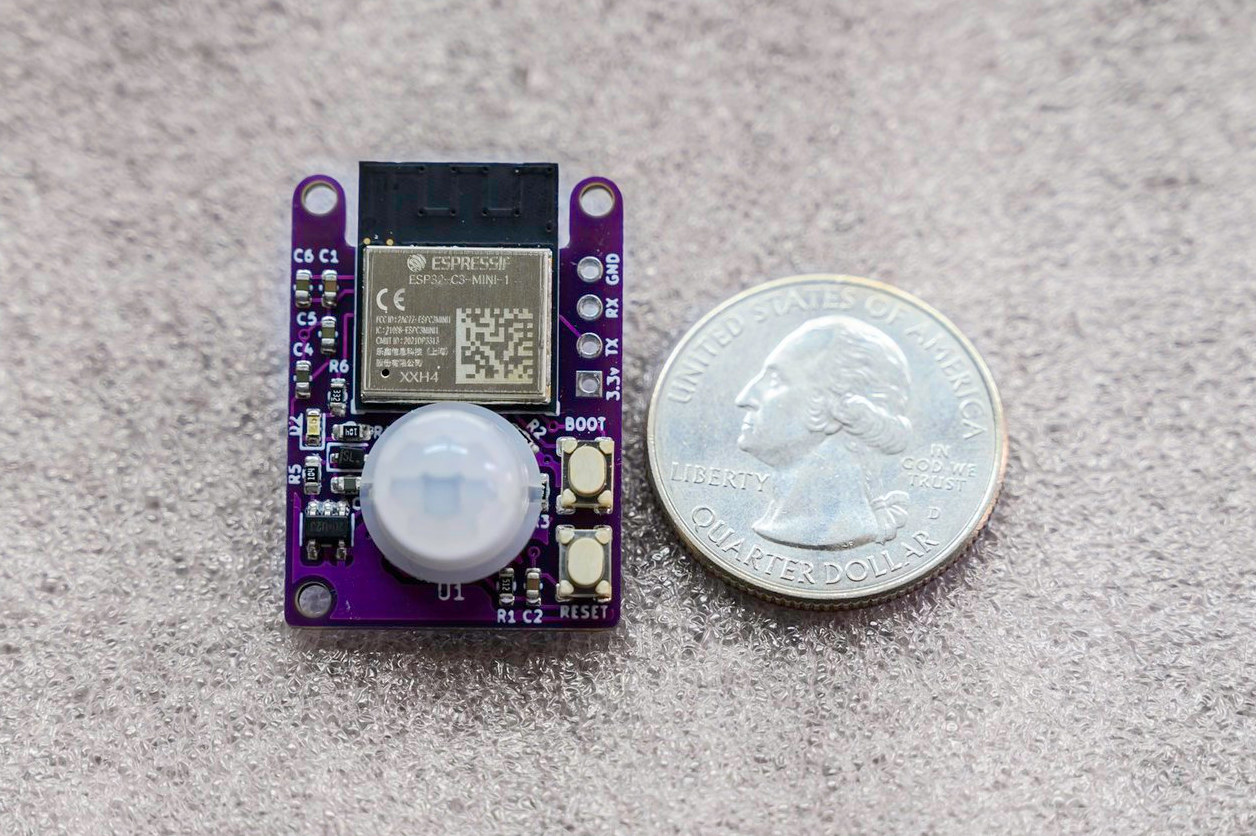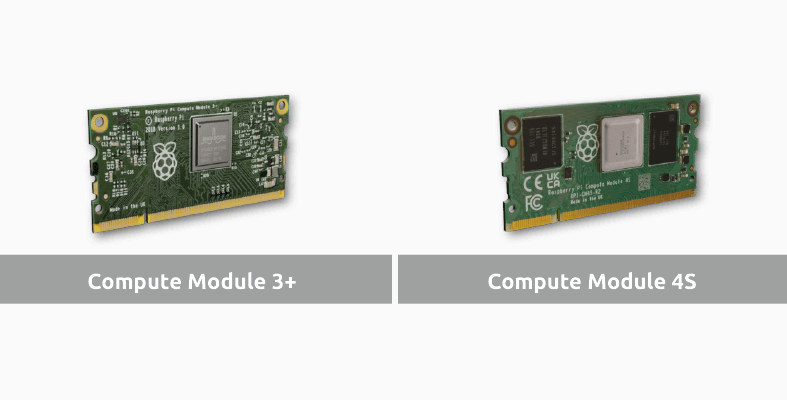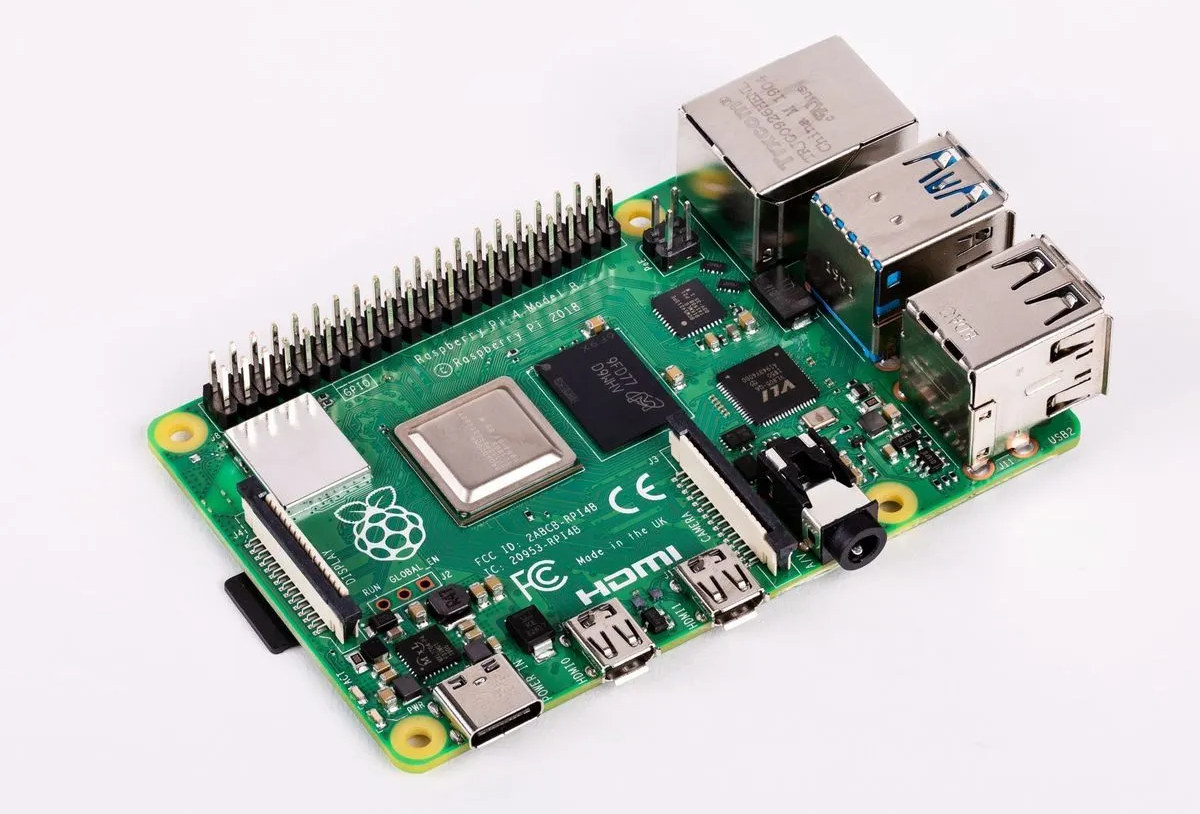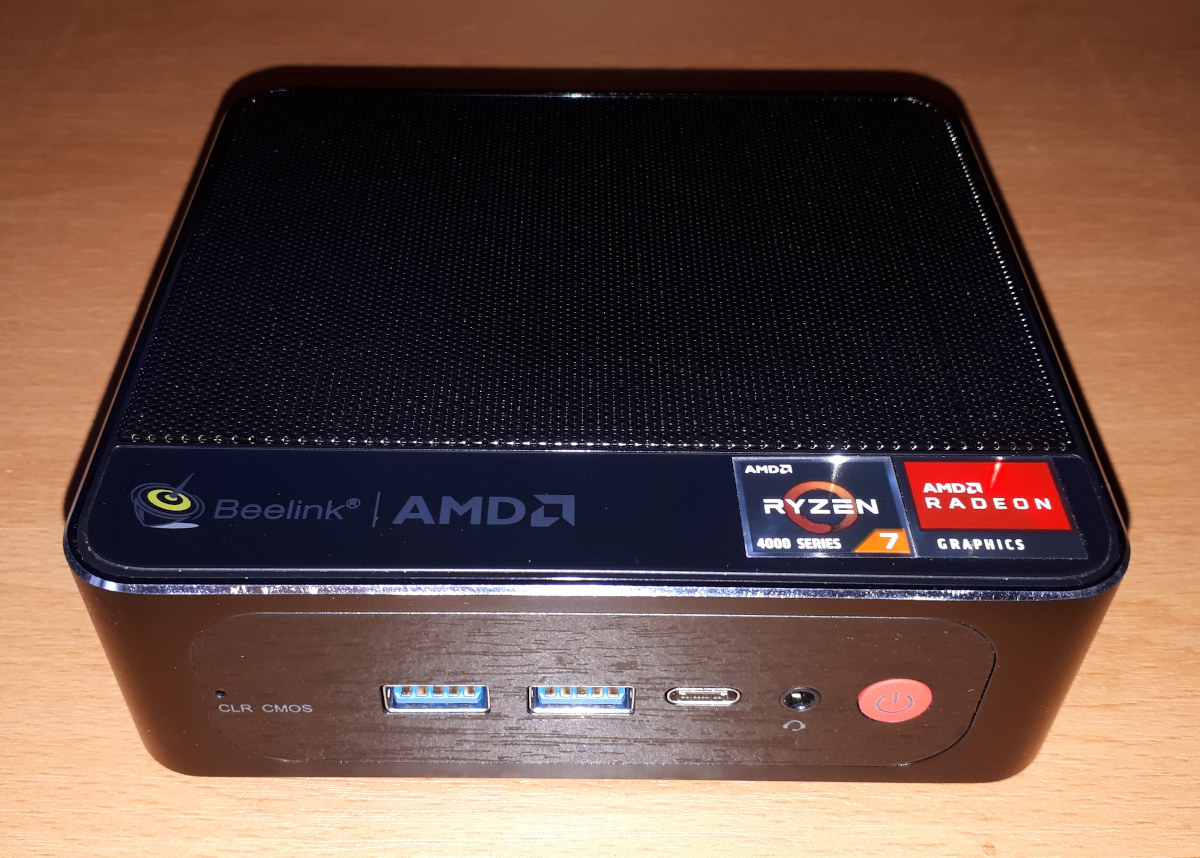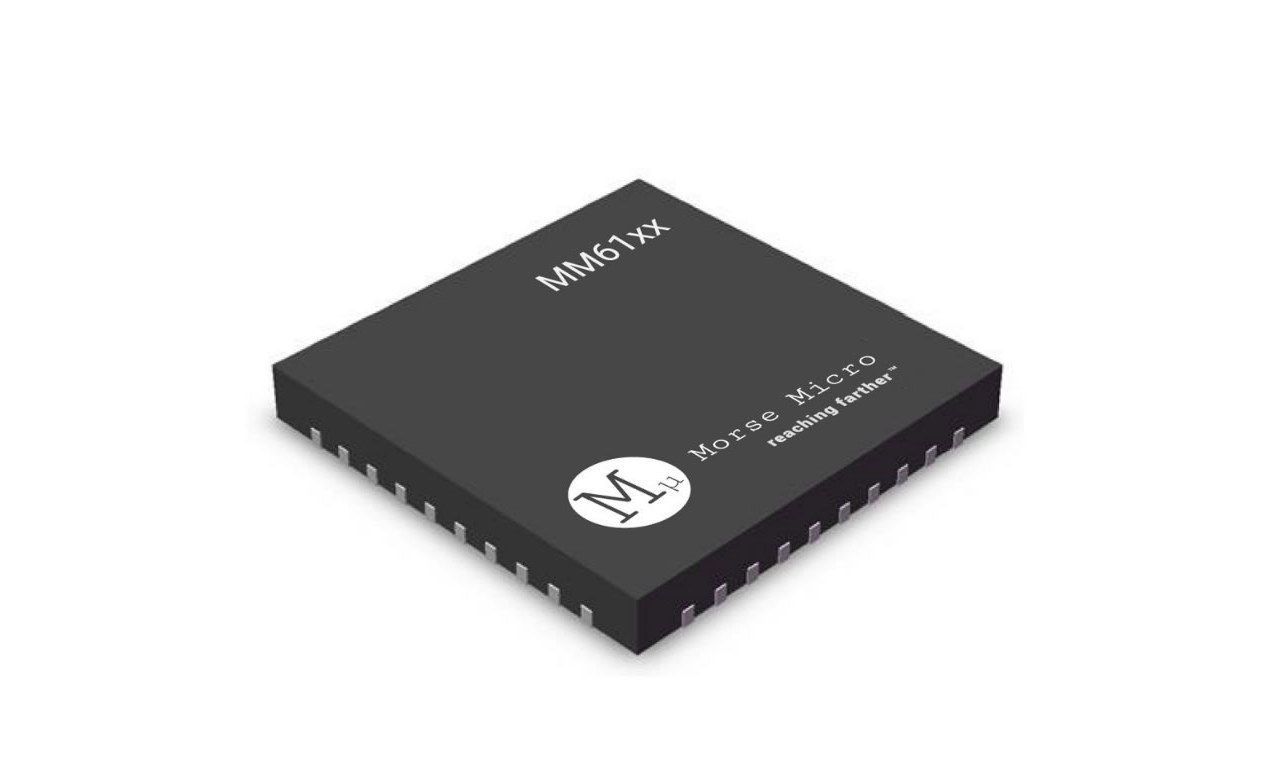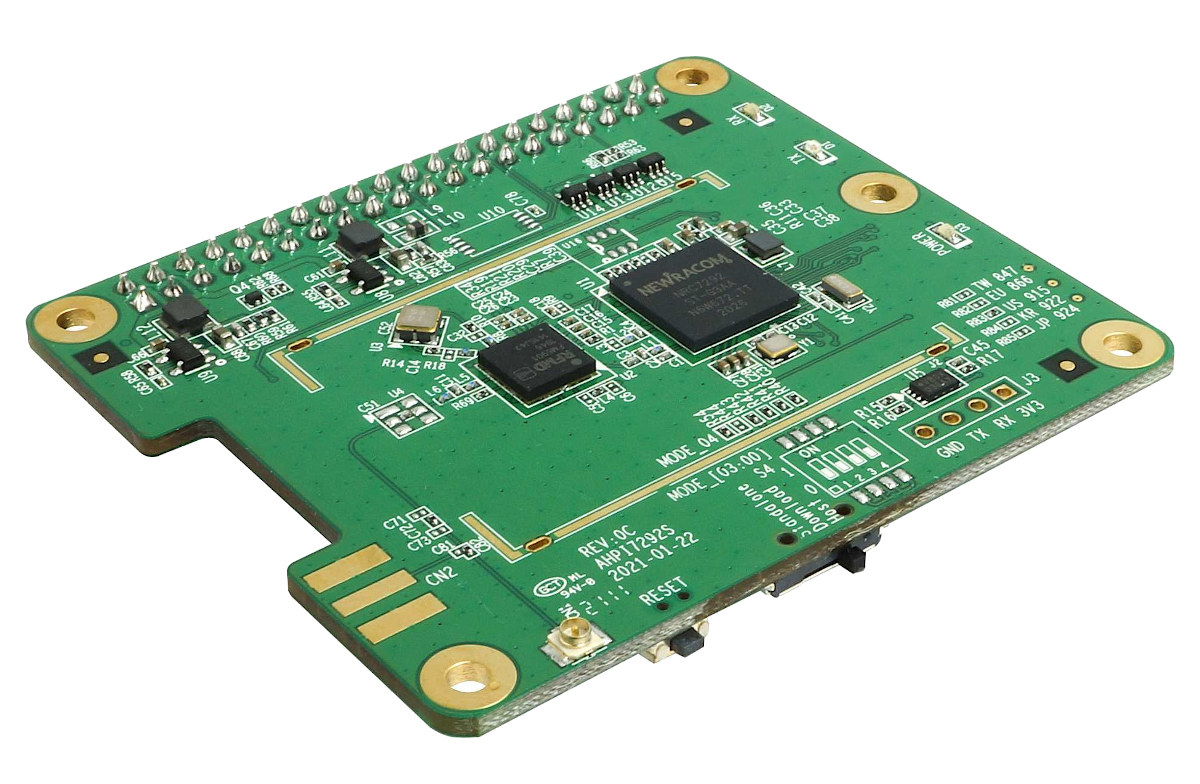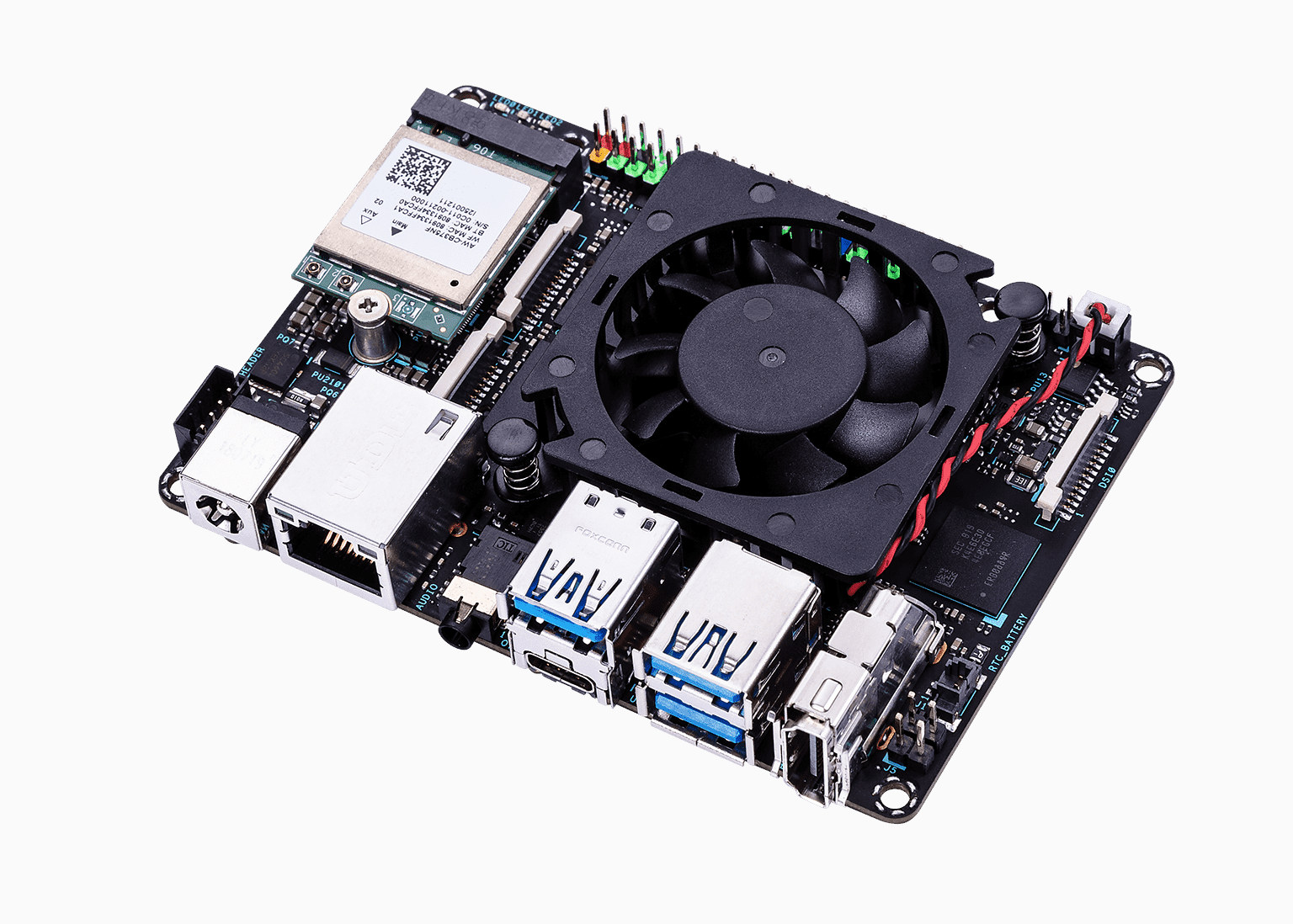Designed by Smart Bee Designs, the tiny Bee Motion Mini combines an ESP32-C3 wireless RISC-V SoC with a PIR sensor for motion detection reporting over WiFi, Bluetooth LE, or Bluetooh Mesh. The board was designed to be as small as possible to fit into a 3D printed case with a LiPo battery and placed/hidden anywhere you want. Motion detection range is up to 5 meters, and the Bee Motion Mini can connect to services like MQTT, ITTT, or NodeRed to trigger other devices upon motion. Bee Motion Mini specifications: Wireless module – Espressif Systems ESP32-C3-MINI-1 module with ESP32-C3 WiFi and Bluetooth LE 5.0 RISC-V SoC up to 160 MHz, 4 MB embedded flash PIR sensor – Passive infrared motion sensor with dome lens, 5-meter range I/O- UART Tx/Rx for flashing firmware, 3.3V, and GND Misc – BOOT and RESET buttons Power Supply JST PH.20 connector for LiPo battery 3.3V via […]
Raspberry Pi Compute Module 4S SO-DIMM module is powered by Broadcom BCM2711 SoC
The Raspberry Pi Compute Module 4S is an upcoming system-on-module based on the same Broadcom BCM2711 quad-core Cortex-A72 processor found in Raspberry Pi Compute Module 4, but using the same SO-DIMM connector as found in earlier Raspberry Pi Compute Module boards, instead of the new board-to-board connectors. The Raspberry Pi Compute Module 4S is not launched yet, but we discovered it will be used on Revolution Pi S and SE series DIN-rail industrial computers via a tweet from Jeff Geerling and his post on Raspberry Pi forums. Apart from the faster processor and support for 4K video output, The Raspberry Pi Compute Module 4S is quite similar to the Raspberry Pi Compute Module 3+. Memory bandwidth might be a little better with the LPDDR4 memory too (TBC), but all the rest looks the same. The main advantage of the new Raspberry Pi CM4S module is compatibility with older SO-DIMM carrier […]
How to get your domain suspended in five easy steps!
Regular readers may have noticed CNX Software was inaccessible for several days, and the reason was that my domain was suspended. I’m a bit late for April Fools’ day, but I’ll show how you can get your domain suspended too in five easy steps! I’ll also provide some background to what happened, and several errors of judgment made along the way What happened? On March 28, as I woke up I noticed I could not access the website and I had also received several emails and mentions on social networks that the website was down. I first tried to restart the LEMP stack of the server nginx, mysql, php, but it did not help. I quickly figured out there was a problem with DNS, so I went to the Cloudflare dashboard which is where I manage the DNS records, but I did not see any problems there. Eventually, I saw […]
Eben Upton expands on Raspberry Pi shortage
As you may have noticed, Raspberry Pi boards may get hard to get and/or be sold at excessive prices by some resellers. Eben Upton explains the reasons behind the Raspberry Pi Shortage and provides some recommendations to work around the shortage and high prices. Raspberry Pi Trading is still manufacturing around 500,000 Raspberry Pi boards or modules per month despite the global semiconductors shortage, and the issue they face is more of a demand shock than a supply shock with demand for Raspberry Pi products having increased sharply from the start of 2021 and remains unabated as the supply chain can not handle that extra demand at this time. That means distributors have backlogs in almost all products, and it takes time for customers to get their orders. Bots are also involved in making automatic purchases as soon as stock becomes available often in order to resell those boards at […]
Beelink SER4 Review – Windows 11, Ubuntu 20.04, and “overclocking” AMD Ryzen 7 4800U SoC
Beelink has released the SER4 which is the latest in their ‘SER’ mini PC series and it features a Zen 2 AMD mobile processor. Beelink kindly sent one for review and I’ve looked at performance running both Windows and Ubuntu and dabbled with ‘overclocking’. Beelink SER4 Hardware Overview The Beelink SER4 physically consists of a 126 x 113 x 40mm (4.96 x 4.45 x 1.57 inches) square metal case. As an actively cooled mini PC, it uses AMD’s 7 nm Zen 2 Ryzen 7 4800U Renoir processor which is an eight-core 16-thread 1.8 GHz mobile processor boosting to 4.2 GHz with Radeon Graphics. The front panel has an illuminated power button, a 3.5mm headphone jack, a Type-C USB 3.1 port with Alternate Mode, dual USB 3.1 ports, and a reset pin-hole ‘CLR CMOS’. The rear panel includes a gigabit Ethernet port, a USB 3.1 port and a USB 2.0 port, […]
Morse Micro MM6104, MM6108 Wi-Fi HaLow SoCs support up to 32.5 Mbps data rate
Australian company Morse Micro MM6104 and MM6108 Wi-Fi HaLow SoCs should offer some competition to the Newracom NRC chips found in all 802.11ah WiFi HaLow boards and devices released so far. Both MM610x chips have similar features, but the MM6104 SoC supports 1/2/4 MHz channel bandwidth for up to 15 Mbps data rate – just like the Newracom NRC7292 chip – while the more powerful MM6108 can handle a data rate of up to 32.5 Mbps thanks to 1/2/4/8 MHz channel bandwidth. MM6104/MM6108 specifications: Optional 32-bit RISC-V Host Applications Processor (HAP) Single-Chip IEEE802.11ah Wi-Fi HaLow transceiver for low-power, long-reach IoT applications Worldwide Sub-1 GHz frequency bands (850MHz to 950MHz) On-chip power amplifier with support for external PA option MM6104 – 1/2/4 MHz channel bandwidth for up to 15 Mbps data rate (Note: the datasheet reads “single-stream max data rate up to 40 Mbps”, but it appears to be a mistake […]
Add WiFi HaLow to Raspberry Pi with ALFA Network AHPI7292S HAT
ALFA Network AHPI7292S is a Raspberry Pi HAT with WiFi HaLow (802.11ah) offering low power connectivity, up to one kilometer line-of-sight range, and that’s mostly useful for security cameras, but it can also be used to extend the range of the network for other purposes. The Newracom NRC7292 expansion board adds to be few WiFi HaLow hardware we’ve seen in the past year including a mini PCIe card, a WiFi HaLow development board, and a gateway kit to extend the range of IP cameras. ALFA Network AHPI7292S specifications: Chipsets – Newracom NRC7292 WiFi HaLow SoC (IEEE 802.11ah draft 8.0 compliant) RF – Qorvo RFFM6901 front-end Frequencies – 847 MHz (TW), 866 MHz (EU), 915 MHz (US), 922 MHz (KR), 924 MHz (JP) Modulation – OFDM with BPSK, QPSK, 16QAM, 64QAM Data rate – 150 Kbps ~ 15 Mbps Channel bandwidth – 1/2/4 MHz Antenna connector – 1x IPEX/U.FL connector or […]
ASUS Tinker Edge R SBC with 3GB RAM, Rockchip RK3399Pro sells for $179
ASUS Tinker Edge R Pico-ITX single board computer with Rockchip RK3399Pro AI processor was first unveiled in 2019 with 6GB RAM, but a cheaper 3GB RAM version with 2GB RAM for the CPU, and 1GB RAM with the integrated NPU just showed up in my news feeds. Whether it comes with 3GB or 6GB RAM, the Tinker Edge R board should mostly be interesting for AI accelerated workload thanks to the 3 TOPS built-in NPU, as well as the two MIPI CSI camera interfaces. ASUS Tinker Edge R (3GB) SBC specifications: SoC – Rochchip RK3399Pro hexa-core big.LITTLE processor with 2x Cortex A72 cores up to 1.8 GHz, 4x Cortex A53 cores @ 1.4 GHz, an Arm Mali-T860 MP4 GPU up to 800 MHz with OpenGL ES 1.1 to 3.2, OpenVG1.1, OpenCL 1.2 and DX 11 support, and NPU delivering up to 3.0 TOPS System Memory – 2 GB dual-channel LPDDR4 […]


